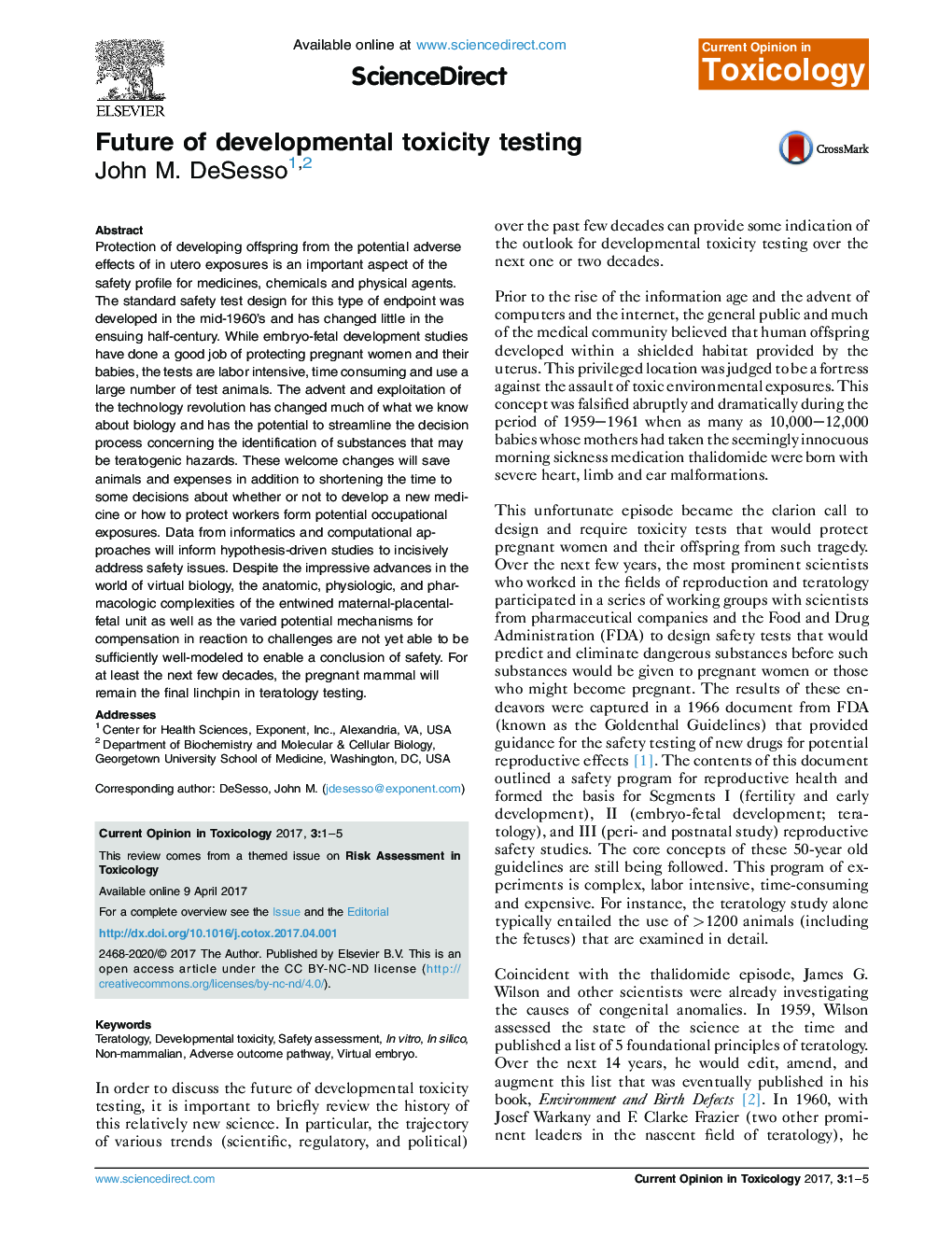| Article ID | Journal | Published Year | Pages | File Type |
|---|---|---|---|---|
| 8920253 | Current Opinion in Toxicology | 2017 | 5 Pages |
Abstract
Protection of developing offspring from the potential adverse effects of in utero exposures is an important aspect of the safety profile for medicines, chemicals and physical agents. The standard safety test design for this type of endpoint was developed in the mid-1960's and has changed little in the ensuing half-century. While embryo-fetal development studies have done a good job of protecting pregnant women and their babies, the tests are labor intensive, time consuming and use a large number of test animals. The advent and exploitation of the technology revolution has changed much of what we know about biology and has the potential to streamline the decision process concerning the identification of substances that may be teratogenic hazards. These welcome changes will save animals and expenses in addition to shortening the time to some decisions about whether or not to develop a new medicine or how to protect workers form potential occupational exposures. Data from informatics and computational approaches will inform hypothesis-driven studies to incisively address safety issues. Despite the impressive advances in the world of virtual biology, the anatomic, physiologic, and pharmacologic complexities of the entwined maternal-placental-fetal unit as well as the varied potential mechanisms for compensation in reaction to challenges are not yet able to be sufficiently well-modeled to enable a conclusion of safety. For at least the next few decades, the pregnant mammal will remain the final linchpin in teratology testing.
Keywords
Related Topics
Life Sciences
Biochemistry, Genetics and Molecular Biology
Biochemistry
Authors
John M. DeSesso,
